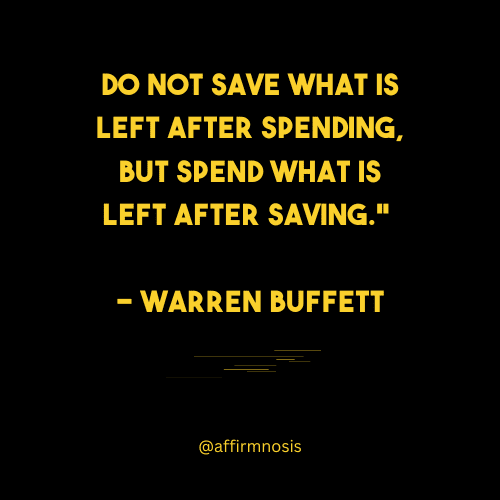It is often said that failing to plan is planning to fail, and this holds particularly true in the realm of finance. Financial planning is the process of creating a roadmap for managing one’s money, both in the short and long term. It involves setting financial goals and developing strategies for achieving those goals.
But how does one go about setting effective financial goals? This is where goal setting comes into play.
Brief explanation of financial planning
Financial planning involves identifying financial objectives, analyzing current financial resources and creating a plan to achieve those objectives. It takes into account factors such as income, expenses, investments, taxes, insurance and retirement planning.
The ultimate goal of financial planning is to achieve financial security by making efficient use of available resources.
The process of financial planning typically begins with assessing one’s current situation by taking a close look at income sources, expenses, assets and liabilities.
Once an individual has a clear understanding of their present situation they can then begin setting realistic and achievable financial goals based on their personal needs and circumstances.
Importance of goal setting in the financial planning process
Setting goals is an essential part of the financial planning process because it provides direction for an individual’s finances. Without clear-cut goals to work towards, individuals may find themselves wasting money on frivolous activities or spending money without any thought or purpose.
The importance of goal setting goes beyond just providing direction; it also helps prioritize spending decisions along with savings decisions.
By breaking down larger long-term goals into smaller short-term ones that are measurable over time enables individuals to focus on progress made towards their larger ambitions.
Further still, having set specific targets encourages individuals to take action towards achieving them which serves as motivation through accountability measures underlined in SMART (Specific Measurable Achievable Relevant Time-bound) goal-setting principles.
it is important when undertaking any form of financial planning that individuals recognize the importance of setting effective goals. By doing so, they increase their chances of achieving their objectives, gaining financial freedom and securing a comfortable future for themselves.
Understanding the Importance of Goal Setting
Definition of goal setting
Goal setting is the process of establishing objectives and targets that you want to achieve within a specific period. In financial planning, goal setting aims to identify what you want to accomplish with your money in the short-term, mid-term, and long-term.
Whether it is purchasing a new car, buying a home, or saving for retirement, setting specific financial goals helps you establish realistic expectations and plan accordingly.
Benefits of Goal Setting in Financial Planning Process
Financial planning without goal setting is like driving on an unknown road without a map or destination. Setting financial goals provides numerous benefits that allow you to remain focused on achieving those objectives.
Provides direction and focus
Setting financial goals helps provide direction and focus towards achieving your desired outcomes. It allows you to set priorities for your finances so that you can allocate funds accordingly.
With clear goals in place, you are more likely to make informed decisions related to spending habits and investments.
Helps prioritize spending and saving decisions
Financial goals help prioritize your spending decisions by highlighting what is important in the present versus future needs. You can allocate funds towards essential expenses as well as long term savings without compromising on either.
Motivates to take action
Clear financial goals motivate individuals into taking proactive steps towards achieving them. As each goal is achieved, it reinforces positive behavior which fuels renewed motivation for another round of actions towards another set of objectives.
Measures progress and success
Setting SMART (Specific, Measurable, Achievable, Relevant & Time-bound) financial goals help track progress within specific timelines and achieve objective measures for success along the way.
This allows individuals to assess their progress regularly while providing opportunity for adjustments if necessary based on actual results versus expected outcomes.
Goal setting is a crucial first step in the financial planning process. It helps identify and prioritize important financial objectives and provides direction towards achieving them.
It also creates motivation to take action and measures progress along the way. Without clear goals, individuals may find it difficult to manage their finances effectively or work towards fulfilling their aspirations.
Steps Involved in Goal Setting for Financial Planning Process
Goal setting is the foundation of any successful financial plan. To achieve your desired financial future, you need to identify your goals and set a clear path to reach them.
The goal-setting process involves identifying short-term, mid-term, and long-term goals that align with your priorities and values. Short-term goals are achievable within a year or less, while mid-term goals take up to five years to achieve.
Long-term goals typically take more than five years or even decades. Ideally, the goal-setting process should begin with a review of your current financial situation.
This means understanding where you are right now financially and where you want to be in the future. Once you have this clarity, it’s time to identify specific financial goals that will help you move from where you are today towards where you want to be tomorrow.
Identify short-term, mid-term, and long-term goals
Start by thinking about what is most important to you in life – both financially and non-financially. For example, do you want to buy a house or travel the world? Do you want to retire early or start your own business?
Once you have identified your priorities and values, break down these larger aspirations into smaller objectives that can be achieved within different time frames. Short-term goals could include building an emergency fund or paying off credit card debt within six months.
Mid-term goals could include saving for a down payment on a house within three years or creating an investment portfolio for retirement income within 10 years. Long term-goals may involve accumulating enough wealth for retirement income replacement at age 65 plus.
Set SMART Goals (Specific, Measurable, Achievable Relevant & Time-Bound)
When setting financial goals use the SMART criteria which stands for Specific (what exactly do I want), Measurable (how much do I want to achieve), Achievable (is it realistic given my current financial situation), Relevant (does it align with my values and priorities), and Time-bound (by when do I want to achieve it). Using the SMART framework creates clarity and focus.
For example, instead of setting a vague goal like “save money,” make it specific by defining how much you want to save. Instead of saying, “I want to save more money,” try “I want to save $10,000 for an emergency fund by the end of this year.” This goal is specific, measurable, achievable, relevant and time-bound.

Create a plan to achieve goals
Once you have identified your financial goals, creating a plan is key. Break down larger goals into smaller achievable steps. For example: if you have a goal of saving $10k for an emergency fund by year-end, break that down into smaller monthly or weekly targets.
Create a timeline for each step so that you can track your progress regularly. Moreover, create an action plan detailing specific actions needed to reach each target step along the way.
These smaller goals should be easier for you to accomplish and help build momentum towards achieving the larger goal. :
The process of setting financial goals doesn’t have to be complicated or overwhelming. Take time identifying what is important today while considering future aspirations in order to determine your short-term mid-term or long-term objectives.
Develop SMART criteria-based objectives that are easy-to-follow using the previously mentioned guidelines. create associated timelines with small actionable steps in order build momentum and track progress, while ensuring your financial planning process stays focused on achieving your overall ambitions.
Tips for Successful Goal Setting in Financial Planning Process
Be Realistic With Your Goals
It’s important to be realistic with your goals when setting them. If you set unrealistic goals, you may quickly become discouraged when you don’t see progress. It’s important to set goals that are achievable, but still challenging enough to motivate you.
For example, if your goal is to save $10,000 in the next six months, make sure you have a realistic plan in place to achieve this goal. This may involve cutting back on expenses or increasing your income through a side hustle.
Review Your Progress Regularly
Regularly reviewing your progress is crucial for successful goal setting in the financial planning process. This can help keep you on track and motivated as you work towards your financial goals.
Schedule regular check-ins with yourself or a trusted advisor to assess how much progress has been made towards each goal and what adjustments need to be made. Use tools like spreadsheets or budgeting apps to track your spending and savings progress.
Adjust
Adjustments are often necessary when it comes to achieving financial goals through the planning process. You may need to modify certain aspects of your plan if circumstances change or unforeseen expenses arise.
For example, if an unexpected medical expense comes up that eats into your savings plan, it might be necessary to adjust the timeline or amount of money being saved each month. Be flexible but still committed to achieving your ultimate goals.
Conclusion
Goal setting is critical for success throughout the financial planning process because it provides direction and focus while motivating us towards our objectives.
By following these tips for successful goal setting- being realistic with our goals, reviewing our progress regularly and adjusting as needed- we can achieve our desired outcomes efficiently and effectively while avoiding discouragement along the way.
Remember, the journey towards financial success is not easy, but it is possible with a solid plan and the right mindset. By setting achievable goals and making steady progress towards them, you can gain control of your finances and secure a brighter future for yourself and those around you.
Quotes from notable individuals on the topic of setting effective financial goals:
- “Don’t tell me where your priorities are. Show me where you spend your money and I’ll tell you what they are.” – James W. Frick
- “Wealth is not about having a lot of money; it’s about having a lot of options.” – Chris Rock
- “The quickest way to double your money is to fold it in half and put it in your back pocket.” – Will Rogers
- “A simple fact that is hard to learn is that the time to save money is when you have some.” – Joe Moore
- “You must gain control over your money or the lack of it will forever control you.” – Dave Ramsey
- “An investment in knowledge pays the best interest.” – Benjamin Franklin
- “The best way to predict your future is to create it.” – Peter Drucker
- “It’s not how much money you make, but how much money you keep, how hard it works for you, and how many generations you keep it for.” – Robert Kiyosaki
- “Do not save what is left after spending, but spend what is left after saving.” – Warren Buffett
- “Financial peace isn’t the acquisition of stuff. It’s learning to live on less than you make, so you can give money back and have money to invest. You can’t win until you do this.” – Dave Ramsey
These quotes emphasize the importance of financial planning, saving, investing, and the mindful use of money.




























































